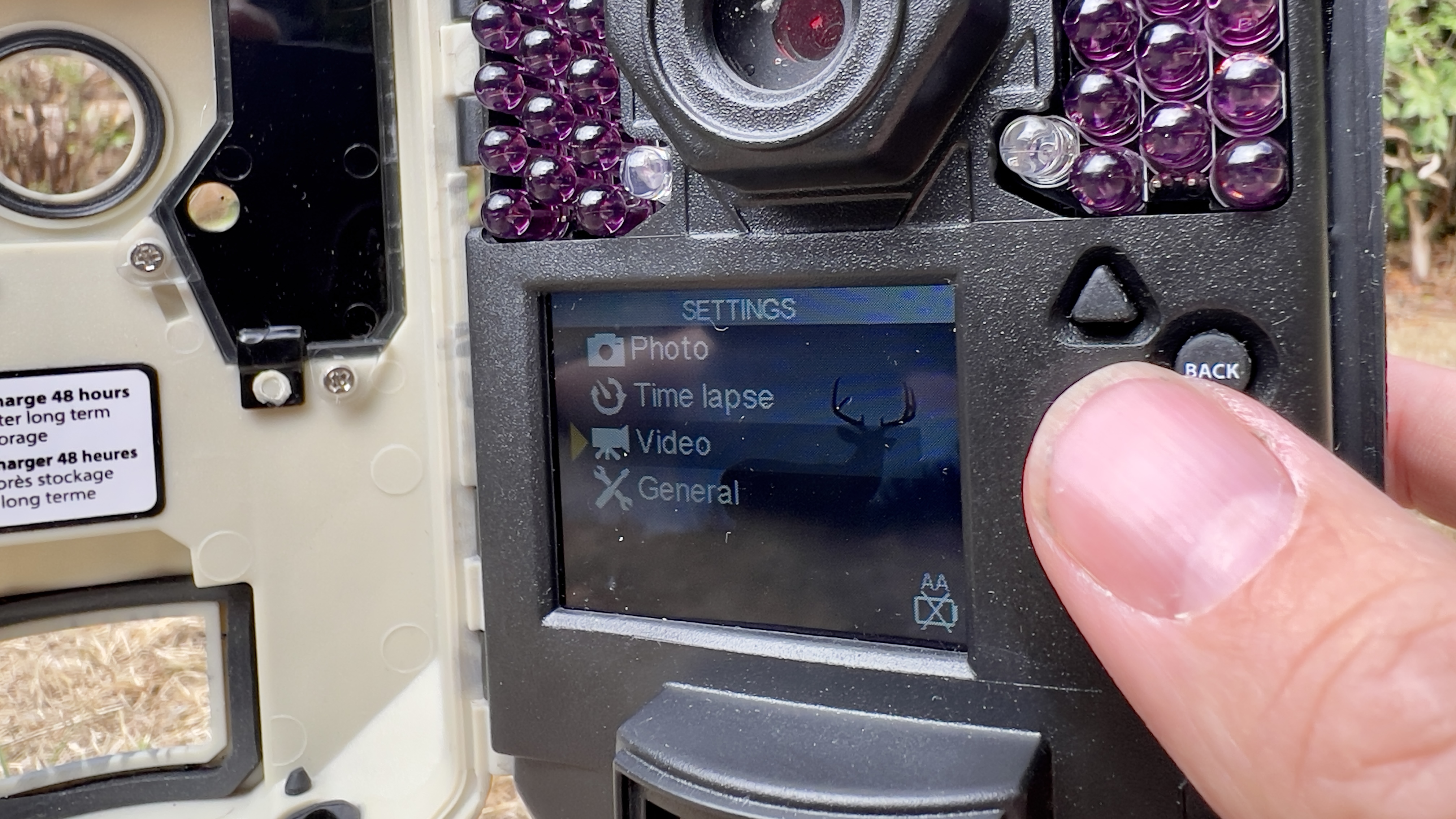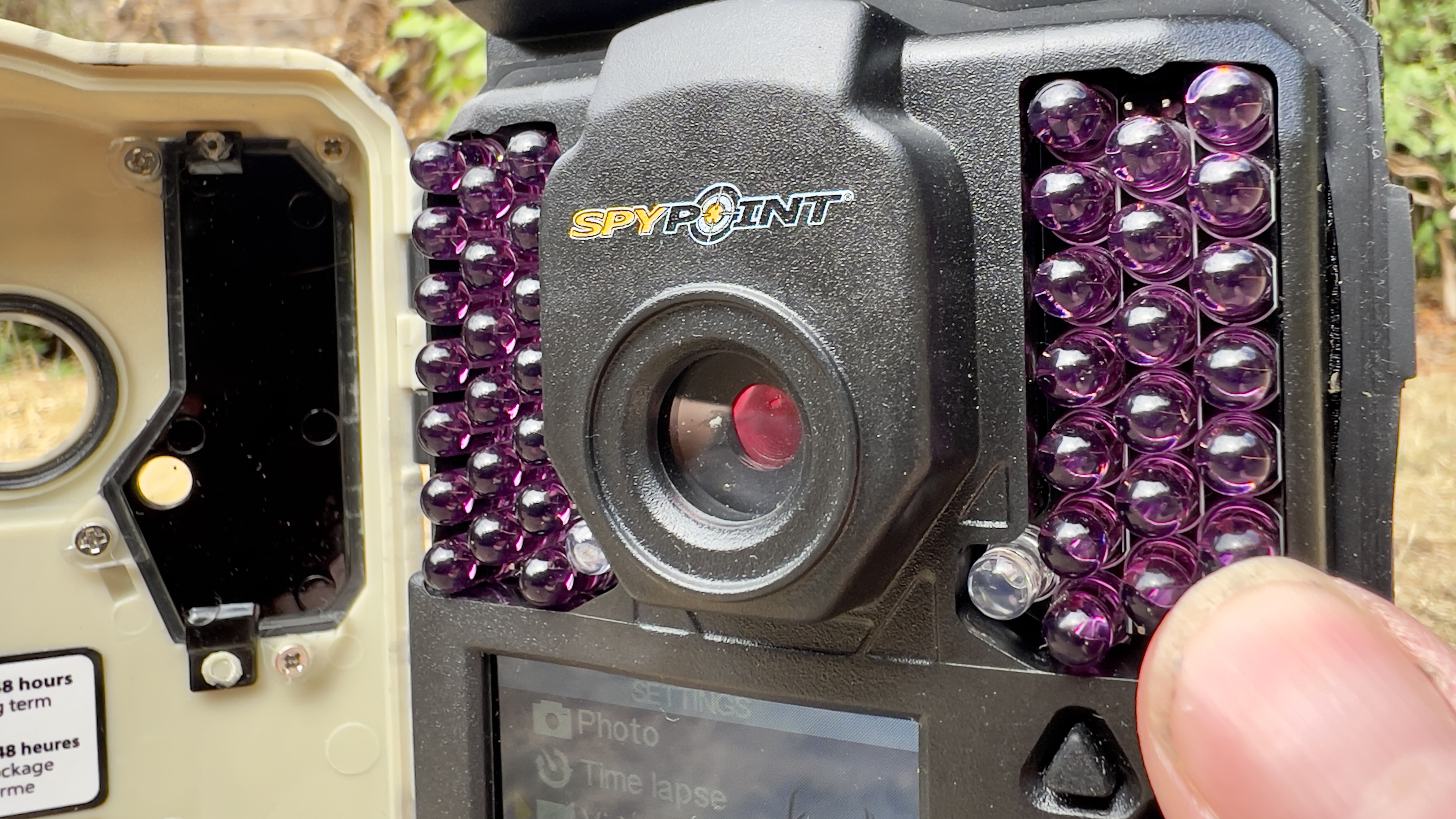Digital Camera World Verdict
The combination of the Spypoint Solar-Dark’s built-in solar panel (and internal battery) takes away the chore and expense of sourcing batteries and reduces the chances of it conking out during a night shoot. However the quality of the footage captured is a bit hit and miss, especially if your prey is too close to the 42 LEDs that brighten up a night shoot, causing footage of animals to be over-exposed.
Pros
- +
Solar power charges internal battery
- +
Shoots both HD video and 12MP stills
- +
View footage via built-in color LCD
Cons
- -
Close subjects can be over-exposed
- -
Motion blur on low-light photos
- -
Exposure can fluctuate during clip
Why you can trust Digital Camera World
Spypoint are a major manufacturer of trail cameras and the Solar-Dark is just one member of an extensive family. Motion-sensitive trail cameras such as the Solar-Dark are designed to let hunters (and photographers) capture video and photographic evidence of animal activity.
The best trail cameras should ideally have a long battery life, fast trigger speed and offer decent – if not amazing – stills and video quality. The spypoint ticks many of these boxes, but if you want to monitor and shoot wildlife remotely, rather than just check the camera incrementally, you'll need a cellular trail camera.
We imagine that the readers of this review are more likely to want to capture shots and clips of local wildlife, so we’ll focus on how the camera captures video and photos of just that. We put the Spypoint Solar-Dark through its paces – both day and night – to see how it fared…
Spypoint SOLAR-DARK specifications
Dimensions: 18 cm x 9.6 cm x 8 cm
Screen: 2” LCD
External memory: SD card
Photo Resolution: 12 MP
Max video resolution: HD 1080p
Motion sensor: Infrared
Detection range: 34 m
Trigger speed: 0.07 sec
Illumination range: 24 m
Spypoint SOLAR-DARK features

Like most trail cameras the Solar-Dark has a water-resistant casing to enable the camera to shoot in all sorts of weather conditions both night and day. The casing is camouflaged so that the camera blends in with a typical outdoor environment (such as woodlands). The Solar-Dark has two banks of LED lights to help it capture animal antics at night. A motion sensor triggers the recording of videos or photos (or both) when an animal wanders into shot.
An LCD screen enables you to set up various shooting modes and also play back footage of the previous night’s outdoor action. What makes the Solar-Dark stand out from most other trap cameras is that you don’t need to worry too much about it running out of power during a shoot. The built-in solar panel on top of the camera charges up the internal battery by day so that it can shoot all night. It then soaks up the sun’s energy during the following day and is ready for another night’s shoot. You can put batteries in the camera as a backup but as rechargeable batteries are not recommended by Spypoint it’s just as well that the solar panel works so well.
Spypoint SOLAR-DARK Build & handling
In build the the Solar-Dark feels like most other trail cameras. Due to its plastic body it’s light and easy to carry. A sturdy clip enables you to open the water-resistant housing and access the LCD menu. Here you can use the buttons to experiment with different shooting settings such as video length and the delay between capturing movement in a new clip. If the delay between capturing clips is set to Instant then you will fill up the memory card more quickly.
The best camera deals, reviews, product advice, and unmissable photography news, direct to your inbox!
Talking of memory cards the Solar-Dark comes supplied with a branded Spypoint 16GB SD card. The card has a speed value of Class 10 which is fast enough to write video files at 1080 HD. You can also use the LCD menu change the sensitivity of the motion sensor which is a useful feature as we once captured a collection of clips featuring nothing more than leaves blowing on a tree. A 1/4 inch thread at the Botton of the Solar-Dark enables you to mount it on a mini tripod. This elevated position keeps the motion sensor at the bottom of the unit clear of obstacles.
Spypoint SOLAR-DARK Hands-on
Spypoint SOLAR-DARK Performance
To test the camera we spent several nights experimenting with different camera settings and initially we were disappointed by the quality of the clips and stills that the Solar-Dark captured. We were able to improve the quality by going to Settings and choosing High instead of Normal. We also chose Blur reduction in the Night Mode setting. The camera is designed to illuminate subjects up to 24m away, so when the subject is relatively distant it looks clear and correctly exposed. However, we found that if an animal such as a garden fox was too close to the camera at night then it would become over-exposed by the devices’s 42 LEDs and key details would become burnt out.
At night the camera shoots in infrared mode, creating classic black and white night vision clips. In daylight footage reverts to color. Infrared exposure is adjusted automatically which can lead to jarring changes in exposure throughout a clip’s duration. Check out our supporting video to see footage and stills captured on the Solar-Dark, then you can make an informed purchasing decision. The infrared detection sensor only has a range of 40º so you may miss the animal walking into shot in your footage.

Spypoint SOLAR-DARK Verdict
This trail cam’s biggest strength is the fact that it has an internal battery that can be topped up by a solar panel. This saves the expense and time of buying and charging batteries. However the solar panel also bumps up the price of the camera so you need to decide what’s more important – power or image quality.
If you want a trail camera that has low maintenance in relation to power and will shoot for nights on end then this will do the trick. But the cost of the camera doesn’t reflect the quality of the footage that it produces so you might be better off with the cheaper Spypoint Force 20 which is almost half the price but produces similar results.
If you're interested in spotting wildlife, then you might like our guide to the best portable hides for wildlife photography, plus binoculars for spotting faraway subjects.
George has been freelancing as a photo fixing and creative tutorial writer since 2002, working for award winning titles such as Digital Camera, PhotoPlus, N-Photo and Practical Photoshop. He's expert in communicating the ins and outs of Photoshop and Lightroom, as well as producing video production tutorials on Final Cut Pro and iMovie for magazines such as iCreate and Mac Format. He also produces regular and exclusive Photoshop CC tutorials for his YouTube channel.




